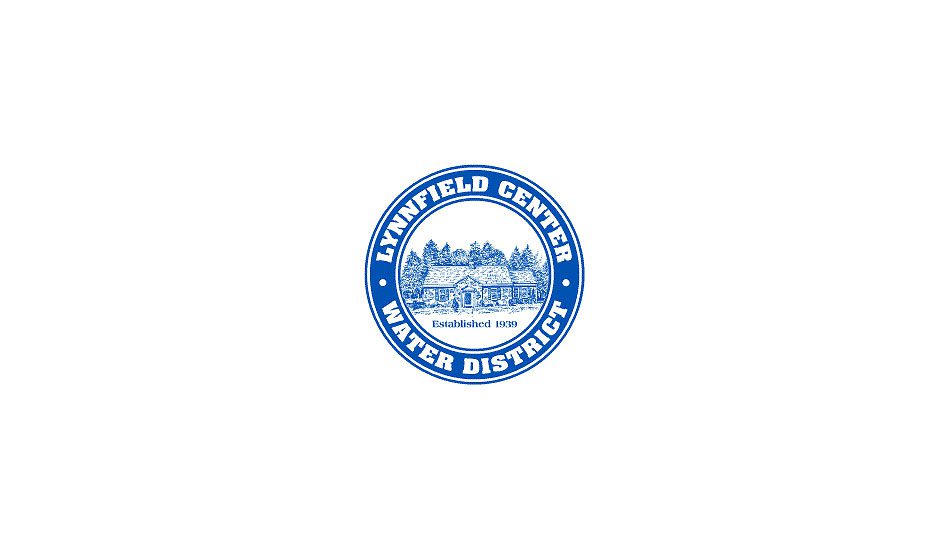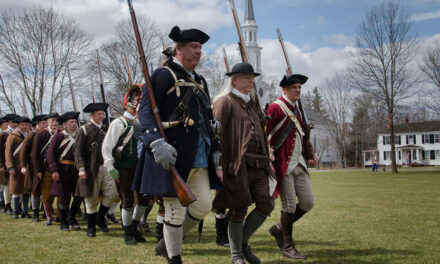By DAN TOMASELLO
LYNNFIELD — The Lynnfield Center Water District’s capital improvement projects are currently in the design phase, Superintendent John Scenna said at a recent Board of Water Commissioners meeting.
Ratepayers overwhelming approved the LCWD’s $9.8 million capital improvement projects during the Annual Meeting last May. Scenna recalled that the projects include constructing a $6.3 million greensand filter water treatment plant at the Glen Drive station in order to treat iron and manganese that have caused discolored water problems that have impacted a number of ratepayers.
Scenna said the project also seeks to address the district’s water quantity issues by getting supplemental water from the Massachusetts Water Resource Authority (MWRA) via Wakefield. He noted that state lawmakers need to approve legislation that will enable the LCWD to join the MWRA.
The cost to connect with Wakefield totals $1.6 million. The project also includes a $1.5 million entry fee to join the MWRA as well as $400,000 for permitting costs.
Water treatment plant
CDM Smith Project Manager Anne Malenfant said the greensand filter water treatment’s design has reached the 10 percent phase.
“The water treatment plant will add greensand filters in an adjacent building that will treat the water,” said Malenfant. “The water will be treated before it goes into the distribution system.”
Malenfant said the Massachusetts Department of Environmental Protection (MassDEP) requires water departments including the LCWD to perform pilot testing in order to confirm the treatment plant’s design parameters. She said the district has submitted the pilot plan to MassDEP to review.
“We are waiting for the pilot plan to be approved, which should happen in January,” said Malenfant.
Malenfant also said nearby wetlands have been flagged on the Glen Drive property. She also said boring tests were undertaken for “geotechnical purposes.”
“Testing the soil is important in order to detect if there are any environmental contaminants in it,” said Malenfant.
Malenfant said CDM Smith’s engineering team is working to identify what should be incorporated into the water treatment plan’s design.
“We want the plant to have a robust design,” said Malenfant. “Backwash pumps and tanks were added to be able to clean the greensand filters without having to pull water from the distribution system, which can be disruptive.”
CDM Smith Client Services Leader Mike Nelson said the backwash pumps and tanks were incorporated into the project in order to prevent flow reversals and dirty water complaints from occurring.
“The backwash tanks will improve the distribution system because the water will not be disturbed,” said Nelson. “It will not cause any potential problems for customers.”
Scenna said the backwash tanks will benefit surrounding neighborhoods as well as the LCWD’s distribution system.
“When we do a backwash of the treatment plant at Phillips Road, we bring water down Phillips Road at such a high velocity that it sometimes creates discolored water,” said Scenna. “We decided to add the backwash tanks in order to prevent that from happening at Glen Drive.”
Nelson said the new treatment plant will include an on-site laboratory.
“The operators will be able to analyze water quality in an appropriate work space,” said Nelson.
Malenfant anticipates the water treatment plant’s 30 percent design will be finalized this month, which will allow the pilot program to begin.
“We anticipate reaching the 60 percent design in April and the 90 percent design in June,” said Malenfant. “The final design will be submitted to MassDEP in September 2022.”
Once the water treatment plant goes on-line, Malenfant said, “iron and manganese will no longer be an issue.”
In response to a question from Patrice Lane resident Patricia Campbell, Nelson said the backwash tanks reverse the direction of treated clean water in order to clean the greensand filters. After the backwashing process is finished, he said the iron and manganese will get sent to a lagoon.
“The water will evaporate and will leave behind the iron and manganese,” said Nelson. “It will stay in the lagoon. We have the same system at Phillips Road.”
Malenfant said the discarded iron and manganese will not go back into the groundwater.
Supplemental water project
Nelson said the supplemental water project ratepayers approved last year involves connecting the LCWD with the town of Wakefield at the Main Street and Bay State Road intersection. This component of the project will enable the district to receive supplemental water from the MWRA.
“The interconnection will be located in an underground concrete vault,” said Nelson. “There will be a meter in the vault just like there are meters in peoples’ homes. We will be monitoring the amount of water being the district is taking in as well as water quality.”
Nelson said the supplemental water project will add up to 250 gallons per minute of MWRA water, which will supplement the district’s current supply by nearly 25 percent.
“It will be adjustable from the Phillips Road station,” said Nelson.
Nelson said the LCWD is investigating potential federal and state grant opportunities that could be used to pay for the vault’s design.
“Every grant opportunity that is available will be pursued,” said Nelson.
After the interconnection project’s design is finalized, Nelson said LCWD officials are looking to have the project go out to bid this spring.
“We expect construction to start in the summer and continue into late 2022,” said Nelson. “That is why we want to send it out to bid this spring.”
Nelson said the district will need to receive a permit from the Massachusetts Department of Transportation since construction for the interconnection project will be taking place in the street.
Campbell asked if abutters will be informed about the construction that will be taking place.
Nelson said abutters will be notified. He noted that the vault will be installed on town-owned land and will not be installed under the street.
“The footprint of construction is larger than what we are building,” said Nelson.
After the interconnection project is completed, Nelson said the LCWD will only be able to use it for emergencies until state lawmakers approve legislation pertaining to the Interbasin Transfer Act (ITA), which will allow the LCWD to be accepted into the MWRA.
Malenfant said the LCWD will be working with the Water Resources Commission, which has the authority under the ITA to approve or deny transfers of water or wastewater that occur outside of the originating river basin, as part of the legislative process.
“We are doing that work right now,” said Malenfant. “We have notified the MWRA that the whole process is moving forward.”
Merrow Road resident Ken MacNulty noted that the legislative process can be “challenging.” He asked if there are ways to move the process along more expediently.
Scenna said he and Water Commissioner Andy Youngren have discussed with the supplemental water project with House Minority Leader Brad Jones (R-North Reading). He said Water Commissioners Chairman Joe Maney has discussed the project with state officials as well.
“We have already done a lot of the work that the process requires,” said Scenna.





